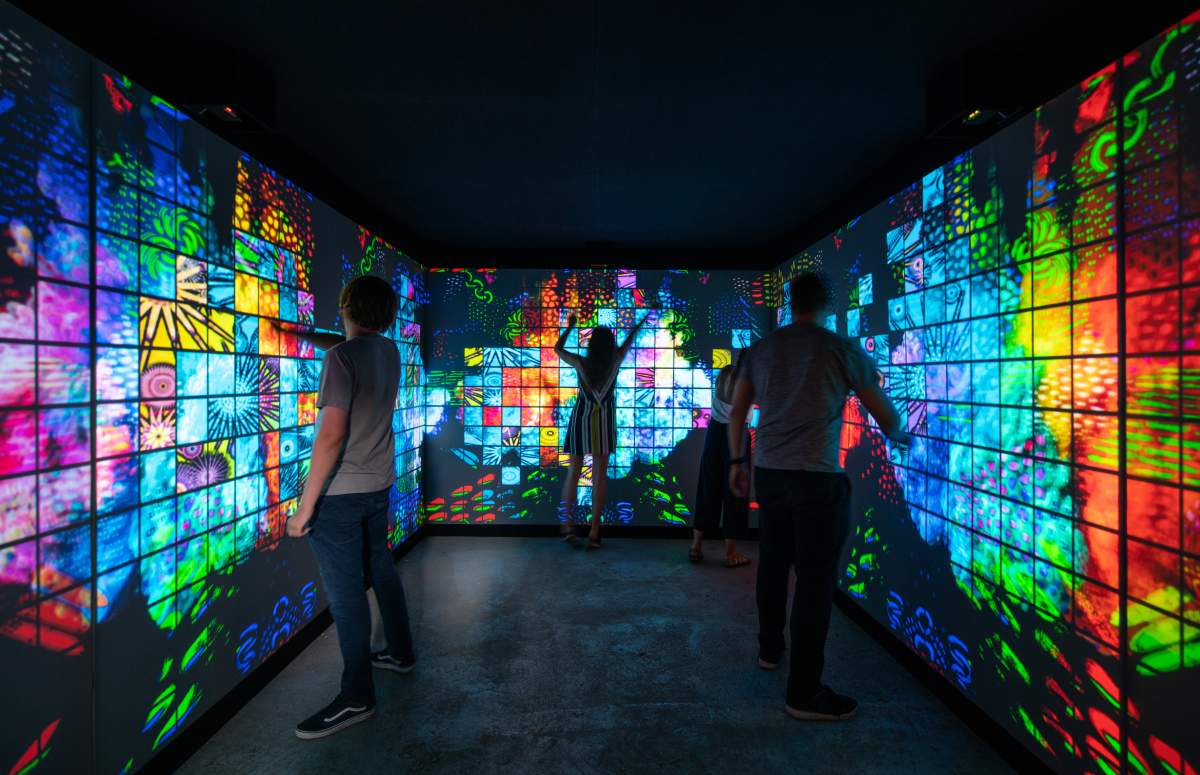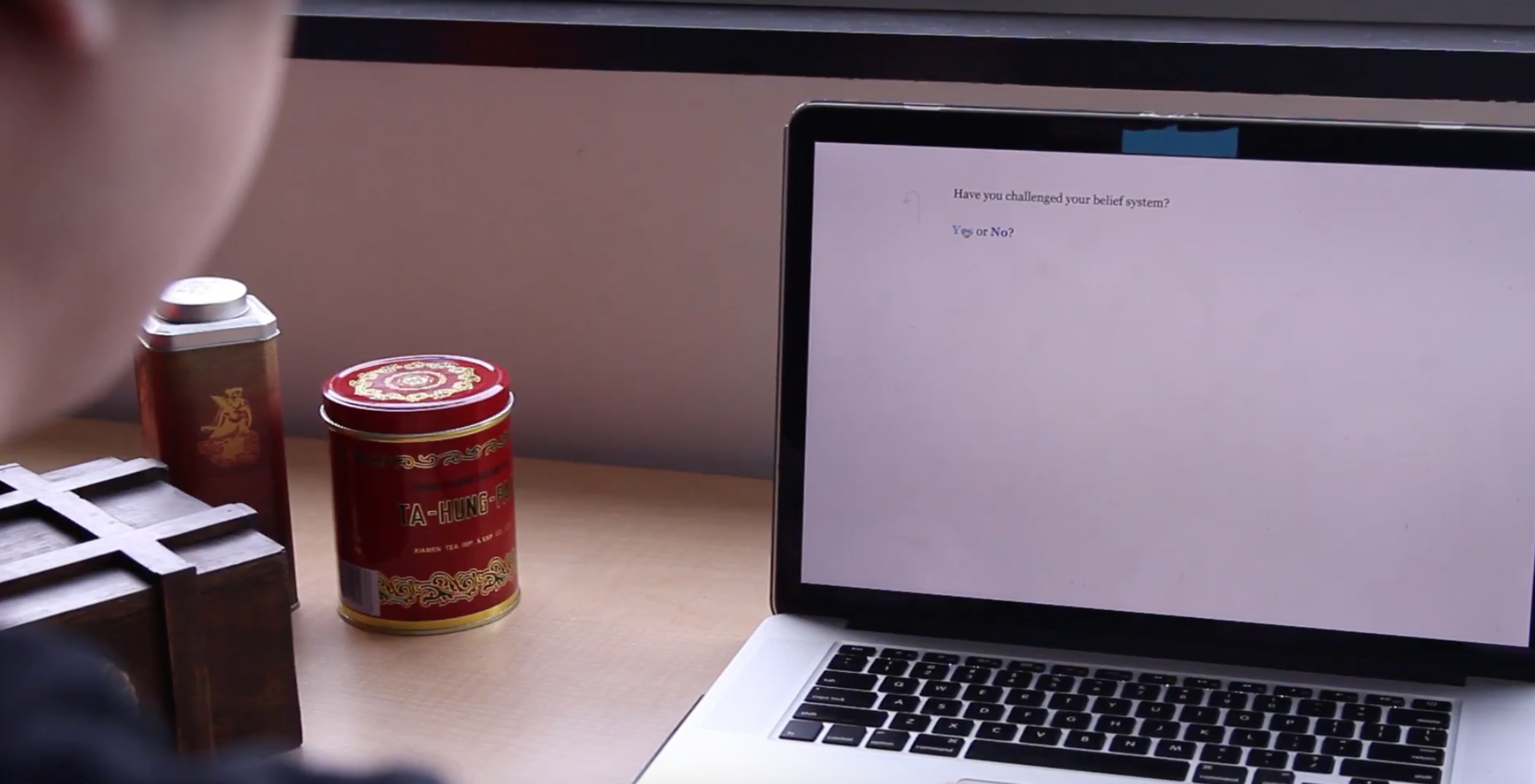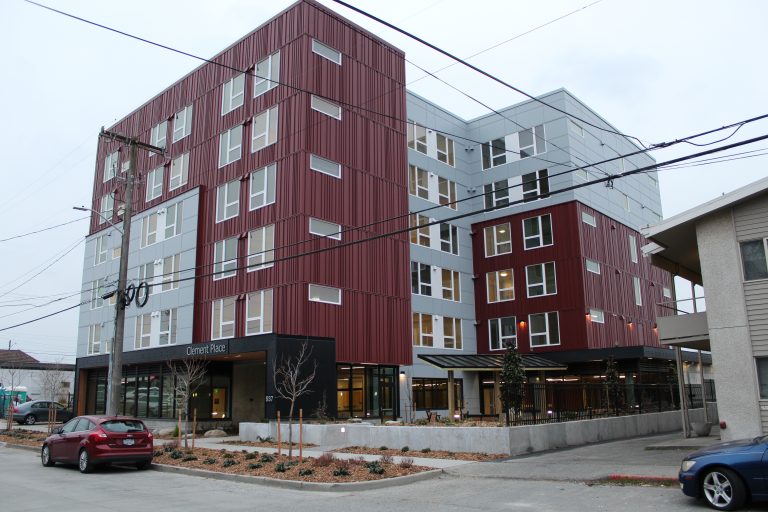
Interactive experiences are often thought of as games, apps, and other digital systems that exist to create a moment of communication between user and system. However, as I found my footing as an artist and designer, I began to understand that interactivity was not bound to cybernetic systems. Through the use of my work, while attending UW Bothell, I was able to see that interactivity could be used to facilitate experiences that changed one's perspective, creating an empathetic lens surrounding diversity and equity, and that these experiences could exist between digital and analog spaces. These ideas were expressed within projects “Spill Your Tea” an interactive fiction that involved traditional Chinese tea ceremony that unfolded personal stories of each group member, and “Design Cinema: DESC” a 360 video experience surrounding Downtown Emergency Services Center's (DESC) mission to accept and transition the formerly homeless as they are within their supportive housing apartment buildings.
Spill Your Tea began with a premise that each one of us had a story to tell; that no matter what our backgrounds or privilege, we had life experiences, emotions, and reflections that made us, us. As a diverse set of students, we weren’t sure how to explore how our diversity intersected. Inspired by the interactivity of making tea, we felt that Chinese tea ceremonies would be the best medium in which to explore our thoughts. While researching our understanding of tea ceremonies and tea, I began to wonder if we would be able to have equitable tea ceremonies. Some seemed like more work than others, with it feeling like the effect would be inequitable when making the tea in real life. Yet as we connected pieces of our story to steps within making tea, it became clear that equity isn’t about being equal, but adjusting accommodation. This work guided me in understanding not only what diversity and equity look like but what they feel like, an important discovery as I moved forward.


Taking this understanding of diversity and equity being an experiential feeling further along in my work, I used this new lens with a team of students as we collaborated on a 360 video with DESC, a non-profit organization supporting the homeless and formerly homeless. DESC’s vision involves an emphasis on empathy through meeting people where they are. Their use of supportive housing is an example of equity in action, creating an experience for residents like no other. Since the physical housing was important to convey this idea, DESC’s newest housing development, Clement Place became the stage for our interactive experience concept. Working with DESC’s vision and our ideas surrounding interactive experiences, we co-produced a 360 video walkthrough of Clement Place that focused on making the 360 space feel real. To make it feel interactive, we utilized the 360 aspects to allow us to have scenes unfold around the audience, making them feel as if they had been transported to Clement Place. This use of immersive technology to solidify an experience was a unique way of utilizing this empathetic lens and allowed me to create an experience that was illustrative of equity to an audience.
To conclude, my navigation of diversity and equity allowed me not only to better understand an empathetic lens as an idea but an experience. Working on these pieces with diverse teams pursuing equity, I have been able to dissect the importance of interactivity as a part of understanding diversity and equity. By blending both digital and analog environments, I am able to utilize immersive technologies to create real-life experiences that feel authentic. In the end, my work has pushed me to examine how I practice diversity and equity, allowing me to better comprehend the connection between these ideals as interactive experiences.
Works Cited
Raymond, Rachel “Spill Your Tea Interactive Fiction” BIMD 236. Introduction to Interactive Media, Dr. Mark Chen. Spring 2018.
http://rachelraymondcreates.com/SpillyourTeaPrototypeFinal2.html
Raymond, Rachel “Design Cinema: DESC.” BIMD 362 Studio Elements III in conjunction with Community Based Learning and Research, Professor Minda Martin. Spring 2019
https://vimeo.com/341422668